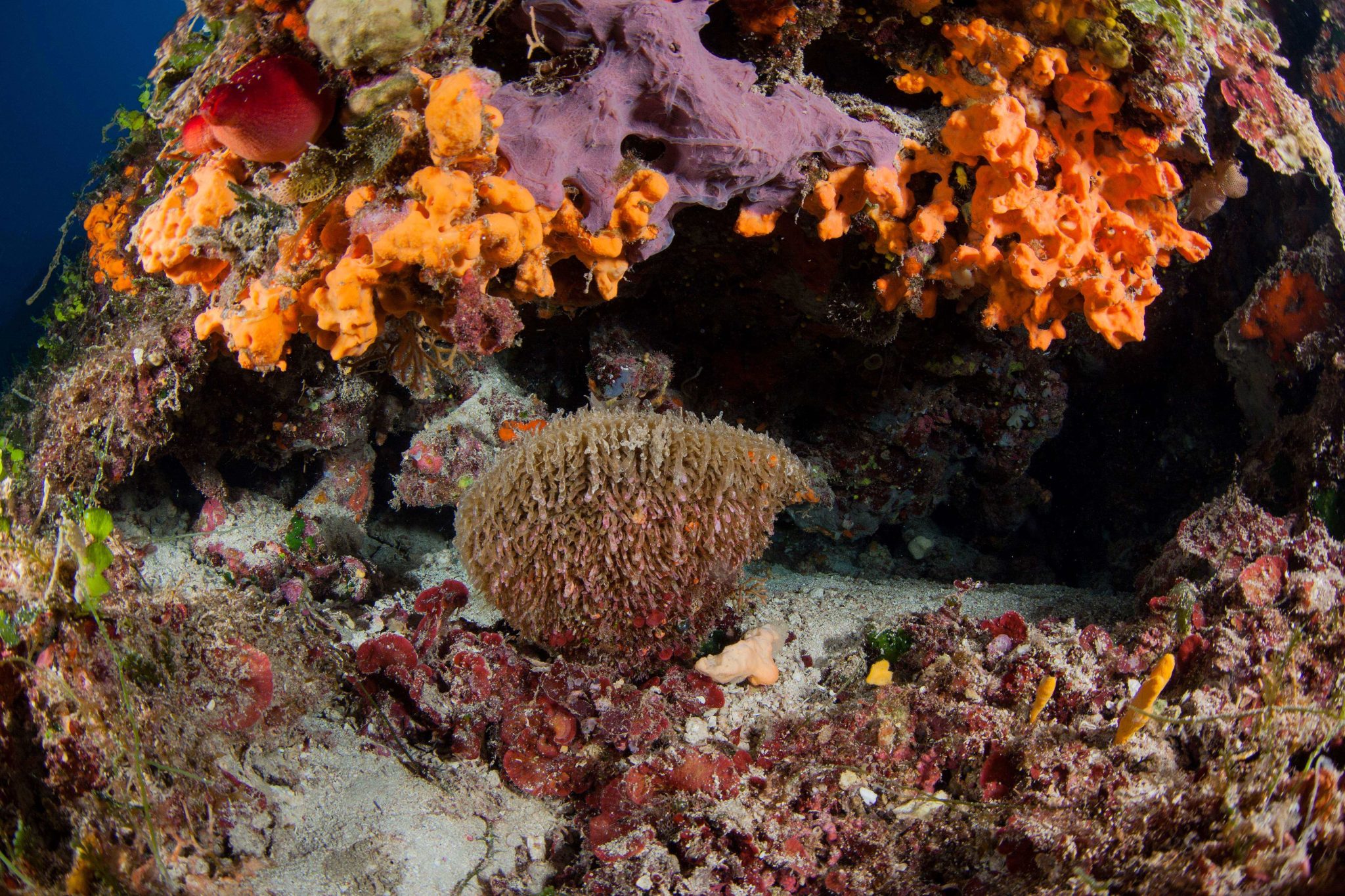
Pinna nobilis
Non-endemic
Critically Endangered(Cr)
Assessors: Poursanidis, D.M. & Papadakis, O.
Photo: D. Poursanidis
Fan Mussel
Pinna nobilis
This long-lived bivalve is endemic to the Mediterranean Sea, where it has a range from Spain to Turkey along the northern and southern coasts and coasts of the Mediterranean islands. Since 2016, a devastating and geographically widespread mass mortality event (MME) has impacted P. nobilis populations throughout the Mediterranean Sea. Previous to the MME, the species was widespread and locally abundant in some locations. In Greece there are a few populations (less than 25 subpopulations) that are known to remain pathogen-free and these are geographically isolated and located in sites characterized by very specific environmental conditions (lagoons with little access to the sea and differing salinities).
The presence of the pathogen throughout the environment hinders potential population recoveries through recruitment, which opens a highly worrying scenario. Fan mussels strongly rely on the survival of adults for the maintenance of populations and the slow population dynamics and low recruitment could seriously hinder recoveries following catastrophic events. In the past, major threats were very localized and came from illegal fishing, habitat loss, boat anchoring, invasive species and most recently climate change. However, none of these threats had led to the extremely widespread and rapid population declines in the species.
The percentage of population size reduction over the last ten years is ≥95%, and the pathogen that has caused MME is still present in the environment, with continuing declines expected. Therefore, this species is listed as Critically Endangered. Continuous monitoring of the species populations is mandatory, as well in those sites where the species has recently disappeared in order to detect potential recruitment in the future. This assessment should be re-evaluated in five years to include additional information and particularly related to the evolution of the disease and the potential occurrence of resistant individuals and recruitment.


